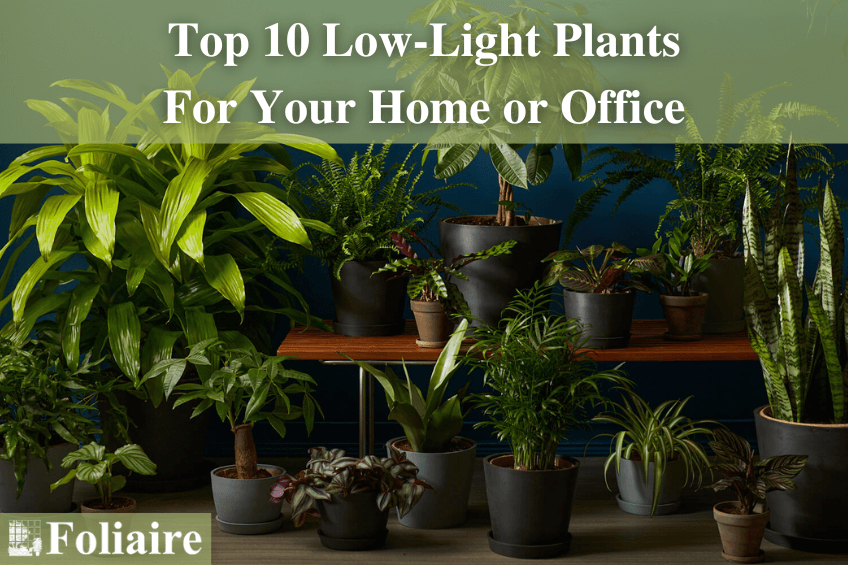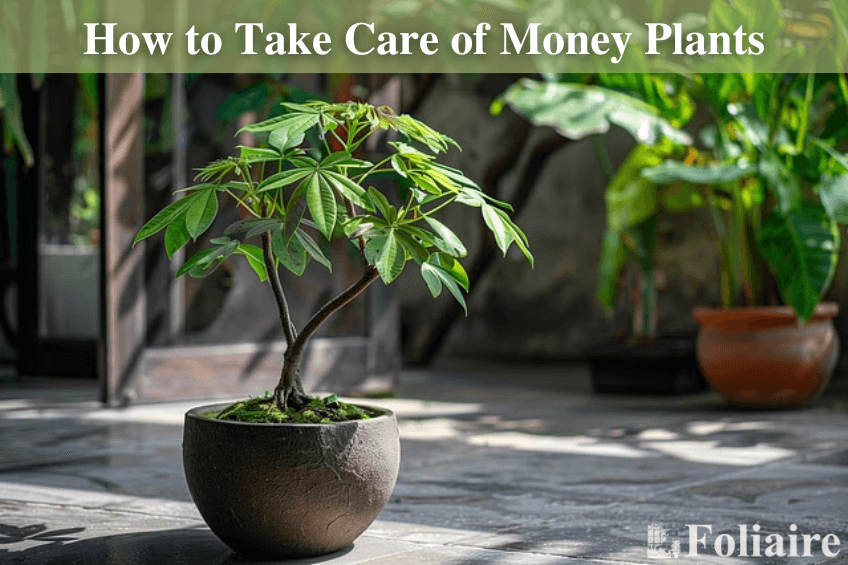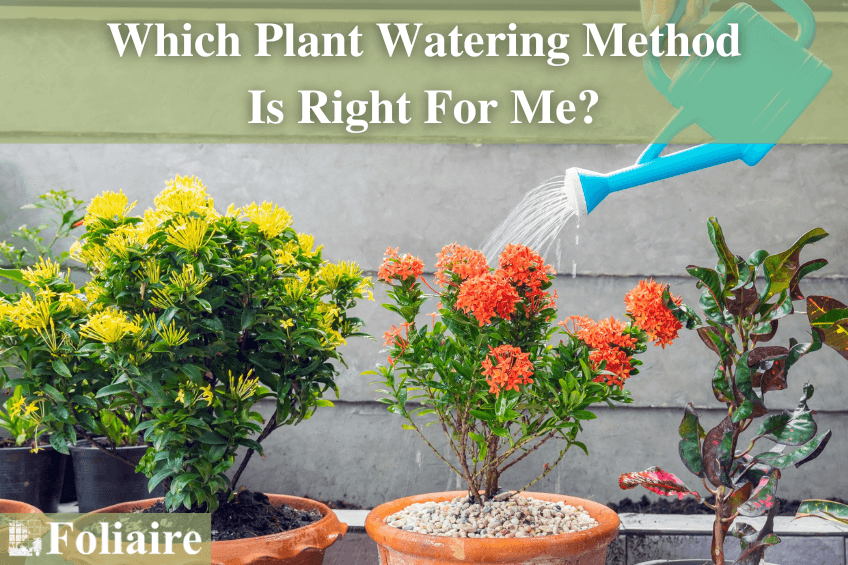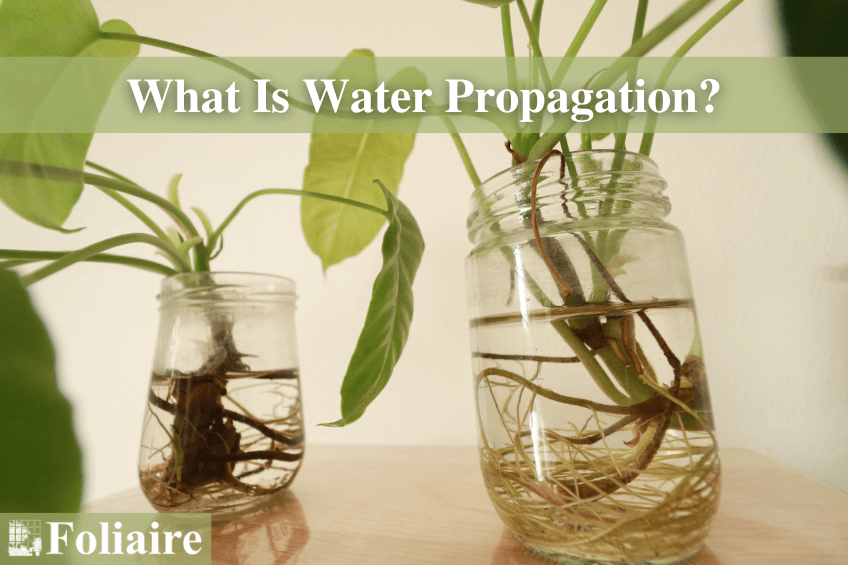Top 10 Low-Light Plants For Your Home or Office
Finding the perfect plants for your home or office can be a challenge, especially in urban environments like those in New England, where natural light might be limited. Whether you’re working with a small apartment, an expansive office space, or even a rooftop garden, selecting plants that thrive in low-light conditions can make all the difference. Not only do these plants enhance the aesthetic appeal of your surroundings, but they also contribute to a healthier indoor environment by improving air quality and adding a touch of nature to your space.
In this blog, we’ll explore the top 10 low-light plants that are perfect for any home or office setting. Each of these plants is chosen for its ability to thrive with minimal sunlight, making them ideal for urban gardening and interior spaces where light is at a premium. Whether you’re looking to add some greenery to your workspace or create a lush indoor garden, these low-light plants are sure to bring life to your environment.
What We’ll Cover:
- Snake Plant
- ZZ Plant
- Pothos
- Peace Lily
- Cast Iron Plant
- Philodendron
- Chinese Evergreen
- Dracaena
- Spider Plant
- Parlor Palm
- Key Takeaways
1) Snake Plant (Sansevieria trifasciata)
The Snake Plant, also known as Sansevieria trifasciata or “Mother-in-Law’s Tongue,” is a resilient and versatile plant that has become a favorite among urban gardeners and interior designers alike. Native to West Africa, this hardy plant is well-known for its ability to thrive in low-light conditions, making it an ideal choice for both homes and offices in New England.
Light Requirements
Snake Plants are incredibly adaptable and can survive in a wide range of lighting conditions, from bright, indirect light to dim corners. However, they truly excel in low-light environments where other plants might struggle. This quality makes them a perfect addition to urban landscaping designs that have limited natural light.
Watering Needs
One of the most attractive features of the Snake Plant is its low-maintenance nature. It’s a succulent, meaning it stores water in its thick, fleshy leaves, which allows it to go weeks without watering. Overwatering can lead to root rot, so it’s best to let the soil dry out completely between waterings. This timing makes it an excellent choice for busy professionals or anyone who prefers a low-maintenance plant.
Urban Gardening Benefits
Aside from its striking architectural appearance, the Snake Plant is also a powerful air purifier. According to NASA’s 2014 Clean Air Study, it’s one of the top plants for improving indoor air quality by filtering out toxins such as formaldehyde and benzene. This resource makes it a stylish addition to your space and a healthy one.
2) ZZ Plant (Zamioculcas zamiifolia)
The ZZ Plant, scientifically known as Zamioculcas zamiifolia, is a favorite among plant enthusiasts and urban gardeners due to its remarkable tolerance to low light and minimal care requirements. Originating from the dry, shaded areas of Eastern Africa, the ZZ Plant has become a popular choice for homes and offices, particularly in environments with limited natural light.
Light Requirements
ZZ Plants are incredibly versatile and can thrive in low-light conditions where many other plants would struggle. They prefer indirect light but can also survive in spaces with no natural light, making them ideal for interior spaces like offices, lobbies, and rooms with few windows. This adaptability makes them a top choice for urban landscaping design, where light levels can vary significantly.
Watering Needs
ZZ Plants are drought-tolerant and have rhizomes that store water, allowing them to survive long periods without watering. It’s important to let the soil dry out completely between waterings to prevent root rot, a common issue with overwatering. During the colder months, you can reduce the frequency of watering even further, making the ZZ Plant an excellent low-maintenance option for both busy professionals and those new to plant care.
Urban Gardening Benefits
In addition to being a hardy and visually appealing plant, the ZZ Plant also contributes to a healthier indoor environment. It’s known for its air-purifying qualities, helping to remove toxins such as xylene, toluene, and benzene from the air. This benefit makes it a smart choice for office environments where air quality can impact productivity and well-being.
3) Pothos (Epipremnum aureum)
The Pothos, scientifically known as Epipremnum aureum, is often referred to as the “devil’s ivy” because of its ability to thrive even in the most challenging conditions. This resilient and low-maintenance plant has become a staple in both homes and offices, particularly in urban environments where natural light can be scarce.
Light Requirements
Pothos plants are highly adaptable when it comes to light conditions. While they flourish in bright, indirect light, they are also well-suited for low-light areas, making them perfect for spaces such as offices, bathrooms, or rooms with limited windows. Their ability to grow in a variety of light conditions makes them a versatile choice for urban gardening and interior design projects.
Watering Needs
One of the many reasons Pothos is popular among plant owners is its forgiving nature when it comes to watering. It prefers to dry out slightly between waterings, so there’s no need to worry if you occasionally forget to water it. Overwatering should be avoided, as it can lead to root rot. Pothos plants are ideal for those who may not have a regular watering schedule but still want to maintain a lush, green environment.
Urban Gardening Benefits
Pothos plants are not just visually appealing with their trailing vines and heart-shaped leaves; they also contribute significantly to indoor air quality. Known for their air-purifying abilities, Pothos can remove common indoor toxins such as formaldehyde, benzene, and xylene from the air. This feature makes them an excellent addition to urban landscaping designs, especially in office spaces where air quality is a concern.
Read our expert plant care tips
4) Peace Lily (Spathiphyllum wallisii)
The Peace Lily, or Spathiphyllum wallisii, is a beloved houseplant known for its elegant white blooms and glossy green leaves. It is not only a visual delight but also a functional plant that thrives in low-light conditions, making it an excellent choice for homes and offices where natural sunlight is limited.
Light Requirements
Peace Lilies are renowned for their ability to grow in low to medium light. While they can tolerate low light, they do best in bright, indirect light, where their iconic white flowers are more likely to bloom. However, even in lower light, the Peace Lily remains lush and green, adding a touch of tranquility to any indoor space.
Watering Needs
Peace Lilies prefer to be kept consistently moist but not soggy. They thrive in slightly damp soil and will visibly wilt when they need water, making it easy to gauge when they need attention. It’s important to avoid letting the plant sit in water, as this can lead to root rot. Regular watering is essential, but the Peace Lily is quite forgiving and will perk back up if you accidentally let it dry out a bit.
Urban Gardening Benefits
Beyond their aesthetic appeal, Peace Lilies are also known for their air-purifying properties. They are particularly effective at removing toxins such as benzene, formaldehyde, and trichloroethylene from the air, making them a popular choice for improving indoor air quality in urban settings. Their ability to thrive in low light and their minimal care requirements make them ideal candidates for urban landscaping design, particularly in offices and city apartments where space and light may be limited.
5) Cast Iron Plant (Aspidistra elatior)
The Cast Iron Plant, scientifically known as Aspidistra elatior, is aptly named for its near-indestructible nature. This hardy plant is a favorite among busy homeowners and office workers who need a low-maintenance, resilient plant that can thrive in a variety of conditions, including low light. Its deep green, lance-shaped leaves bring a touch of lushness to any indoor environment, making it a versatile choice for both home and office spaces.
Light Requirements
The Cast Iron Plant is remarkably adaptable to low-light conditions, making it ideal for areas that receive minimal natural light, such as corners or rooms with small windows. While it can handle some indirect light, it truly shines in spaces where other plants might struggle. This durability makes it a valuable addition to urban gardening, where sunlight can often be a scarce resource.
Watering Needs
One of the Cast Iron Plant’s most appealing qualities is its minimal watering requirements. It prefers to be kept on the drier side, making it perfect for those who might forget to water regularly. The plant should be watered when the top inch of soil feels dry, but it can tolerate occasional neglect without suffering. Overwatering, however, should be avoided, as it can lead to root rot.
Urban Gardening Benefits
The Cast Iron Plant’s resilience makes it an excellent candidate for urban landscaping design, particularly in environments where maintenance might be a challenge. Its ability to withstand low light, infrequent watering, and fluctuating temperatures makes it a staple in offices and homes across New England. The plant’s sturdy nature also means it can withstand the rigors of high-traffic areas, making it ideal for busy office settings.
6) Philodendron (Philodendron hederaceum)
The Philodendron, specifically Philodendron hederaceum, is a classic favorite among plant enthusiasts for its heart-shaped leaves and its adaptability to various indoor conditions. Known for its trailing vines and lush foliage, the Philodendron is a versatile plant that brings a touch of greenery and sophistication to both homes and offices. Its ease of care makes it an excellent choice for those looking to add greenery to urban spaces.
Light Requirements
Philodendrons are well-suited for low to medium-light environments. While they can thrive in bright, indirect light, they are equally comfortable in low-light conditions, making them perfect for offices or rooms with limited natural light. This flexibility in light tolerance makes Philodendrons a popular choice for urban landscaping design, where natural light might be inconsistent.
Watering Needs
Philodendrons prefer consistently moist soil but can tolerate periods of dryness, making them relatively low-maintenance. It’s important to let the top inch of soil dry out between waterings to prevent root rot, especially in lower light conditions where the soil retains moisture longer. Philodendrons are forgiving plants, so even if you forget to water them occasionally, they will bounce back quickly.
Urban Gardening Benefits
Philodendrons are not just aesthetically pleasing but also highly functional in improving indoor air quality. They are effective at removing toxins such as formaldehyde from the air, which is particularly beneficial in office settings where air quality can impact productivity and well-being. Their ability to thrive in various indoor environments makes them a staple in urban gardening plans and rooftop garden designs.
7) Chinese Evergreen (Aglaonema spp.)
The Chinese Evergreen, known botanically as Aglaonema spp., is a plant that combines beauty with resilience, making it a top choice for both novice and experienced plant owners. With its striking, variegated leaves that come in shades of green, silver, and sometimes red, the Chinese Evergreen is a versatile plant that can brighten up any indoor space, especially in urban settings where light is limited.
Light Requirements
Chinese Evergreens are incredibly adaptable to low-light conditions, making them ideal for homes and offices where natural sunlight is scarce. While they can tolerate brighter, indirect light, they thrive in low-light environments, which often makes them a go-to plant for areas such as hallways, bathrooms, or offices without windows. This adaptability makes them perfect for urban landscaping design where light levels can vary.
Watering Needs
One of the key strengths of the Chinese Evergreen is its ability to tolerate a range of watering schedules. It prefers to be watered when the top inch of soil has dried out, but it’s not overly sensitive to occasional neglect. Overwatering should be avoided to prevent root rot, but the plant’s forgiving nature makes it an excellent choice for those who may not have a consistent watering routine.
Urban Gardening Benefits
Chinese Evergreens are not only visually appealing but also functional in improving indoor air quality. They filter out toxins such as formaldehyde and benzene, contributing to a healthier indoor environment. This filtering makes them particularly well-suited for urban gardening and office interiors where air quality is a concern.
Do you need help
renovating your garden?
8) Dracaena (Dracaena fragrans)
The Dracaena, specifically Dracaena fragrans, is a popular choice for indoor plant enthusiasts due to its striking appearance and robust nature. Known for its long, arching leaves that can range in color from deep green to variegated yellow and green, the Dracaena adds a touch of tropical elegance to any space. This plant is particularly hardy in urban environments where it can thrive with minimal care.
Light Requirements
Dracaena plants are highly adaptable when it comes to light conditions. While they prefer bright, indirect light, they are also quite content in low-light settings, making them ideal for offices, hallways, or living rooms with limited natural light. This versatility in light tolerance makes the Dracaena an excellent choice for urban gardening projects and rooftop garden designs, where lighting can be inconsistent.
Watering Needs
Dracaenas are relatively low-maintenance when it comes to watering. They prefer water when the top inch of soil has dried out, and they can tolerate occasional periods of dryness. However, it’s important to avoid overwatering, as this can lead to root rot, which Dracaenas are particularly susceptible to. Their low water needs make them a perfect choice for busy professionals or those who might not have a regular watering routine.
Urban Gardening Benefits
In addition to their aesthetic appeal, Dracaena plants are a great source for improving indoor air quality. They are effective at removing common indoor toxins such as formaldehyde, benzene, and trichloroethylene, making them a valuable addition to both home and office environments. Their tall, slender growth habit also makes them ideal for adding height and visual interest to urban landscaping designs.
9) Spider Plant (Chlorophytum comosum)
The Spider Plant, known botanically as Chlorophytum comosum, is a classic favorite among houseplants, cherished for its easy care and charming, arching foliage. With its distinctive green leaves sporting white or yellow stripes, the Spider Plant is both decorative and functional, making it a perfect addition to homes and offices alike. Its resilient nature and adaptability to various conditions make it an ideal choice for urban environments.
Light Requirements
Spider Plants thrive in bright, indirect light but are also highly adaptable to low-light conditions. This evolution makes them well-suited for spaces that don’t receive much natural light, such as offices, kitchens, or bathrooms. Their ability to flourish in a variety of lighting situations makes them a versatile option for urban gardening, where light availability can often be a challenge.
Watering Needs
Spider Plants are relatively low-maintenance when it comes to watering. They prefer water when the top inch of soil feels dry, but they are forgiving if you occasionally forget. It’s important to avoid overwatering, as Spider Plants are susceptible to root rot. They also appreciate occasional misting, especially in drier indoor environments, which helps to keep their foliage looking fresh and vibrant.
Urban Gardening Benefits
Beyond their aesthetic appeal, Spider Plants are notable for their air-purifying abilities. They are particularly effective at removing pollutants such as formaldehyde and xylene from indoor air, making them a great choice for improving air quality in homes and offices. Their ability to produce “spiderettes” or small offshoots makes them easy to propagate, allowing you to expand your plant collection with minimal effort.
10) Parlor Palm (Chamaedorea elegans)
The Parlor Palm, scientifically known as Chamaedorea elegans, is a timeless and elegant houseplant that has been a popular choice for indoor spaces for over a century. With its graceful arching fronds and compact size, the Parlor Palm brings a touch of tropical sophistication to any environment, making it particularly well-suited for homes and offices in urban settings.
Light Requirements
Parlor Palms are well-known for their ability to thrive in low to moderate light conditions. They prefer indirect light but can tolerate lower light levels, making them ideal for spaces such as offices, living rooms, and bedrooms that may not receive direct sunlight. Their adaptability to low-light environments makes them an excellent addition to urban gardening and interior landscaping projects where natural light is a challenge.
Watering Needs
The Parlor Palm is relatively low-maintenance when it comes to watering. It thrives best when evenly moist but not waterlogged, so it’s important to allow the top inch of soil to dry out between waterings. During the winter months, when the plant’s growth slows down, watering can be reduced. The Parlor Palm is also forgiving if you occasionally forget to water it, making it an easy-care option for busy urban dwellers.
Urban Gardening Benefits
Beyond its aesthetic appeal, the Parlor Palm is popular for its ability to improve indoor air quality by filtering out toxins such as formaldehyde and benzene. Its compact size and slow growth make it an ideal choice for small spaces, and its lush, green fronds add a touch of natural beauty to any room. Whether you’re looking to enhance your office interior or create a serene corner in your home, the Parlor Palm is a versatile and low-maintenance choice that thrives in urban environments.
Key Takeaways
Low-light plants offer a perfect solution for those looking to bring nature indoors, especially in urban environments where natural light may be scarce. The top 10 plants we’ve highlighted—Snake Plant, ZZ Plant, Pothos, Peace Lily, Cast Iron Plant, Philodendron, Chinese Evergreen, Dracaena, Spider Plant, and Parlor Palm—are all well-suited to thrive in homes and offices across New England. These plants not only enhance the aesthetic appeal of your space but also contribute to a healthier indoor environment by improving air quality and adding a calming presence.
Ready to transform your home or office with these easy-care, low-light plants? Foliaire is here to help you create the perfect green space tailored to your needs. Whether you’re adding greenery to your workspace, enhancing your home’s interior, or designing a rooftop garden, our team of experts can guide you every step of the way. Contact us today to learn more about our services in urban landscaping design, rooftop garden design, and landscape design fabrication. Let’s bring the beauty of nature into your space, no matter where you are!
Contact us today for a free plantscaping consultation
View Our Other Plant Care Tips
For more guidance on creating the perfect environment for your houseplants or to explore more about indoor landscape design, visit Foliaire’s wealth of resources. Let us help you cultivate an indoor oasis that brings beauty, health, and well-being into your everyday life.
- Ferns
- Tropical Plants
- Philodendrons
- Fiddle Leaf Figs
- Lawn and Garden
- Top 10 Pet-Safe House Plants
- Why Are My House Plants Dying?
- Top 10 House Plants for Beginners
- How to Find the Best Garden Decor
- What Is The Ideal Humidity for House Plants?
- What’s the Difference Between Plantscaping and Landscaping?
Boston’s #1 Choice for Urban Landscape Design
Foliaire is a full-service interior and exterior greenscape design-build firm in Boston’s historic South End. For over 40 years, we’ve provided award-winning interior plantscaping services in the Boston Metro area.
We customize and plan our roof garden projects and interior plantscaping to fit your unique space and tastes. That’s how we’ve built a reputation of unparalleled style and elegance for corporate plantscaping and residential community projects.
In addition, we’ve received several environmental design awards and have appeared in several publications. You can find us in Architectural Digest, House and Garden, Horticulture, and Interiorscape.
Follow us on social media @Foliaire for more valuable plant care advice:




